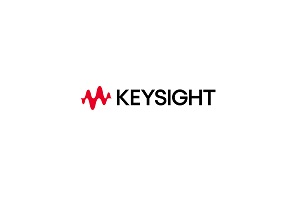Santa Rosa, United States – Keysight Technologies, Inc., and McGill University have demonstrated 1.2 Tbps and 1.6 Tbps O-band coherent transmissions operating over 10 km using distributed feedback lasers (DFBs) for both the carrier and local oscillator. This will be presented at OFC 2023, a global conference for optical communications and networking professionals.
Artificial intelligence (AI), 5G, and internet of things applications are driving the demand for more bandwidth in optical networks. Leveraging high symbol rate systems increases the aggregate per-wavelength data rate to reduce the cost-per-bit in optical systems. A key trend in data centres is the transition to higher symbol rates through integrated optics, which reduces the component count, cost, and power consumption.
To address growing short-reach intra-data centre traffic demands – from 2 to 10 km – coherent transmission systems are being considered as an alternative to intensity modulation direct detection (IMDD) systems that are currently operating at 200 Gbps per wavelength over 2 km in the O-band. Low chromatic dispersion makes power-efficient coherent links an attractive replacement for IMDD technologies at 1.6 Tbps and beyond.
To demonstrate improvements in short-reach intra-data centre transmission rates using coherent O-band solution, Keysight, McGill University, and other research partners collaborated to achieve the transmission. The demonstration system consisted of Keysight’s new M8199B 256 GSa/s Arbitrary Waveform Generator that delivers 75 GHz bandwidth in combination with a thin-film lithium niobate I/Q modulator with 100 GHz bandwidth and a 110 GHz 256 GSa/s Keysight Infiniium UXR-Series Oscilloscope. The accomplishment showcased how data centres can use coherent optical fibre transmission systems operating at 167 Gbaud, using dual-polarisation, 64-quadrature amplitude modulation scheme to transmit signals at 1.6 Tbps in the O-band using DFBs for the carrier and local oscillators.
McGill University professor and Canada research chair David V. Plant, says “The McGill University research team is very proud to be working with the test and measurement leader Keysight, and our partners, all of whom contributed to achieving this new record. The breakthrough was accomplished by using the latest technologies, including Keysight’s recently announced and most powerful Arbitrary Waveform Generator. This achievement is a significant demonstration on the path to consolidating short-reach, O-band, coherent optical fiber transmission systems for data centre interconnect applications.”
Joachim Peerlings, vice president of network and data centre solutions at Keysight Technologies, says “Pushing coherent technologies into the O-band is essential for its future, ubiquitous use in data centres. Our record 1.6 Tbps O-band coherent transmission with Canada’s McGill University is a key milestone towards this goal. The continued proliferation of AI requires new levels of server and network performance that must scale computing resources within reasonable energy bounds. This result is a milestone for the industry moving towards greener data centres.”
Comment on this article below or via Twitter: @VanillaPlus OR @jcvplus






